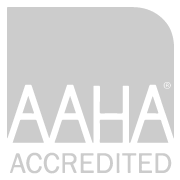
Pet Oral Health Procedures in Manlius
Professional Oral Hygiene Procedures, Assessment, Treatment & Prevention
Additional training is essential for the veterinarian in advanced oral health care procedures and oral surgery. It requires skilled, licensed veterinary technicians trained to perform veterinary dental hygienists’ procedures, anesthesia, and pain prevention and control. One licensed veterinary technician will be dedicated to monitor your pet under anesthesia while another licensed technician is performing the oral hygiene procedure. Proper equipment, such as intra oral dental radiograph capabilities and a high speed, water-cooled dental drill are imperative.
Excellent dental care involves:
- informing owners of the importance of excellent oral hygiene
- teaching them how to identify periodontal disease
- developing home care periodontal disease preventative strategies
- performing oral health procedures to maintain oral health
At Compassionate Care Veterinary Hospital of Manlius, P.C., we are committed to providing the highest quality oral hygiene procedures, including advanced diagnostics and treatments. We follow the American Animal Hospital Association's published Dental Care Guidelines for Dogs and Cats. These guidelines provide a resource to help veterinary practice teams provide optimal dental care. We strive to stay current with the latest techniques and products.
To schedule your pet’s dental appointment, contact our office online or call us directly at (315) 508-7884 today.
Our investment in essential equipment, such as a high speed, water-cooled drill and the necessary instrumentation, allows us to provide expanded oral health care and extensive periodontal disease treatments.
Preparation & Scheduling
Prevention is the main reason for your dog's or cat's professional oral hygiene procedures. The goal is to prevent tooth and gum disease, and other disorders that put the health of your pet's teeth and mouth at risk. The oral health procedure begins with a consultation appointment, which includes the physical examination and pre-anesthesia lab work. The evaluation, any recommended tests, and consultation are performed to tailor anesthetic and pain management, and for procedural planning. They affect the type and administration of anesthesia and may improve the safety and effectiveness of the anesthetic processes involved with your pet's care.
Day of the Procedure
Before the procedure, food and water are restricted, and any medication is administered or withheld as discussed and planned. Most pets are admitted the morning of the procedure, but alterations are sometimes made. During inpatient admission, the care surrounding your pet's anesthesia and procedure are discussed, as well as any questions or concerns that you may have addressed.
Each pet receives a pre-anesthesia evaluation. This includes, but is not limited to:
- a review of medical records
- tests
- a general physical evaluation
- an oral examination
General Anesthesia
General anesthesia is required to properly provide dental care. To prepare for general anesthesia, pre-anesthetic medications are administered. An intravenous catheter is placed, and fluids are administered to all pets. General anesthesia is induced by giving an intravenous injection. A properly fitted endotracheal tube is placed in the trachea and cuffed to administer oxygen and the gas anesthesia, and to protect the airways and lungs from accidental aspiration. General anesthesia is maintained with the administration of an anesthetic gas.
A licensed veterinary technician is assigned to monitor and care for your pet from anesthesia induction, throughout the oral health procedure and until your pet has recovered from anesthesia. Vital parameters, including body temperature, heart rate and rhythm, blood oxygen saturation, blood pressure, respiration rate and end-tidal carbon dioxide levels (the measurement of exhaled carbon dioxide) provide important information to adjust the anesthetic protocol.
The Steps Involved to Perform an Oral Health Procedure
- Oral examination under general anesthesia
- A detailed evaluation of individual teeth and supporting structures for abnormalities such as increased mobility, evaluation of the gingival pocket depth around each tooth to identify gum and bone attachment loss, fractured teeth, masses, etc.
- Gross calculus removal
- Intraoral digital radiography
- Essentially all pets require whole mouth intraoral dental radiographs to evaluate the approximately 60% of each tooth that is hidden under the gum line, as well as the supporting bone and connective tissue structures under the gums
- After the oral assessment of the detailed examination and radiographs, a treatment plan is developed
- Any new findings and treatment options are discussed with owners and consent is obtained for the discussed treatment plan
- Plaque and tartar above the gum line is removed using forceps, ultrasonic scaler and hand instruments
- Plaque and tartar below the gum line is removed using curettes and special ultrasonic cleaning tips are used
- Removal of the diseased tissue in the gingival pocket using curettes promotes healing and gingival reattachment to the tooth surface
- Polishing of the teeth with a polishing paste to smooth out the defects on the tooth surfaces and remove any residual plaque
- Irrigation of the teeth and gingival pockets with water or a medicated rinse removes debris and diseased tissue
- Post cleaning examination of the teeth and gingival pockets for the presence of any additional plaque and calculus, exploration for any periodontal disease pockets, and evaluation for any teeth defects or disease
- Dental charting during the procedure to record disease, missing or extra teeth, loose or fractured teeth, periodontal pocket depths, any significant pathology
- Therapy and additional pain medication as indicated by the oral evaluation, diagnostics and treatment plan
- Post-operative intraoral radiographs after extractions or if indicated for other procedures
- Application of fluoride and/or plaque prevention barrier
- Your pet is closely monitored by the licensed veterinary technician until recovery from anesthesia has been completed
- Pain medication is continued to maintain patient comfort
- The home care preventative plan is developed and includes the immediate post-operative care instructions, the progress evaluations, and the dental home care you are able to or willing to learn to do
- A discharge appointment is scheduled for you to discuss the procedure, ask any questions, to go over the home care plan, and discuss any dental products and dental diets
Home Care
Home care is the single most important thing you can do to maintain your pet's oral health. Plaque prevention is essential to protecting teeth between regular visits. Plaque is constantly being made and deposited in your pet's mouth. The goal of dental home care is to minimize plaque formation and to remove plaque from tooth surfaces and gingival pockets before it mineralizes into calculus. This can occur within days of a teeth cleaning. You can prevent significant periodontal disease from developing if you are able to, and you pet is accepting of, daily brushing.
Your success at home will greatly influence the frequency of progress evaluations and professional cleaning. Regular dental care is essential to preventing more complicated dental problems from developing. Good oral hygiene practices that include daily brushing, eating a healthy diet that supports dental health, and visiting your veterinarian for twice a year oral evaluation (or more often if necessary) are the best ways to keep your pet's teeth and gums healthy. With an appropriate home-care program and timely professional oral hygiene procedures, it is possible for your dog or cat to live a long life and not lose any teeth to periodontal disease.
Compassionate Care Veterinary Hospital of Manlius, P.C. is here to provide your pet with top-notch dental services. Schedule yours by completing our online contact form or calling (315) 508-7884 today.
```
What Makes Us Stand Out?
-
High-Quality Veterinary Medical Care Since 2008
-
Involved Caring For & Educating Our Community
-
Rave Reviews from Our Clients
-
Educational Approach to Pet Care
-
Continuity of Care
-
Conscientious & Comprehensive Exams





